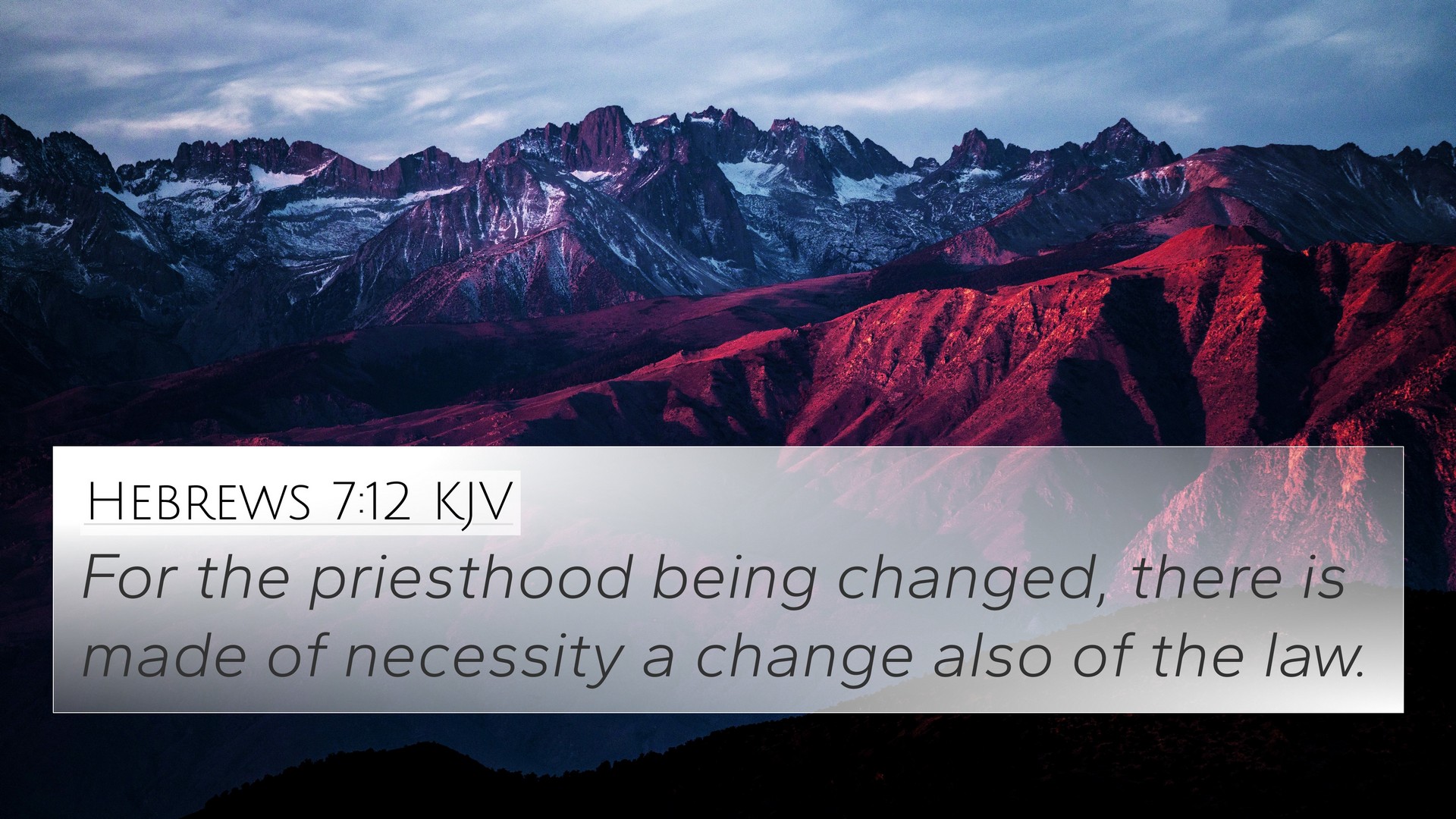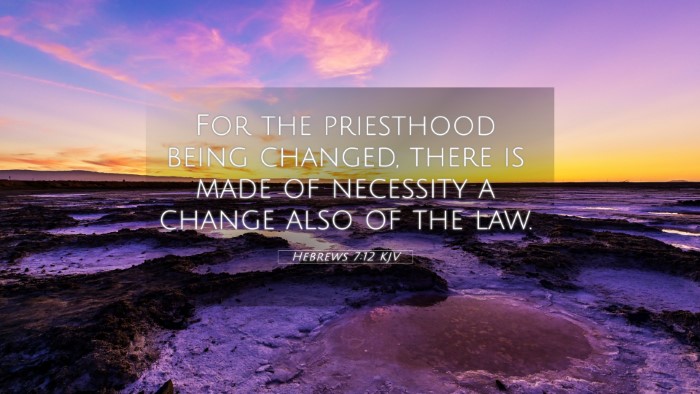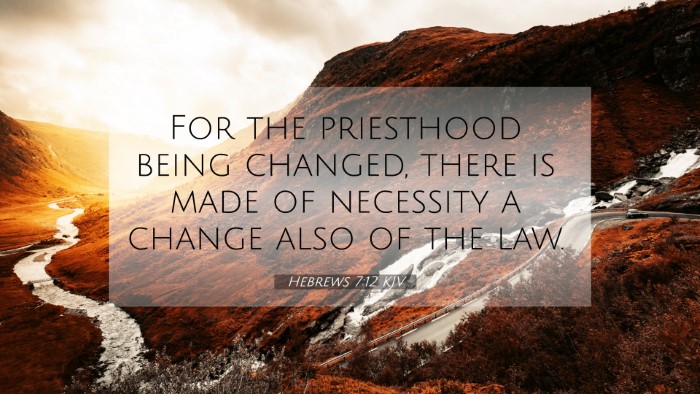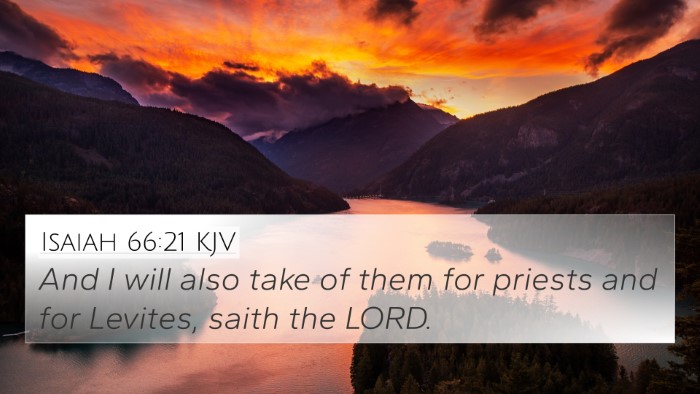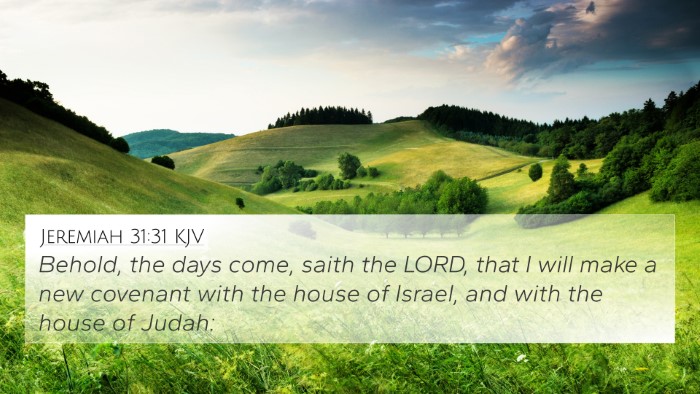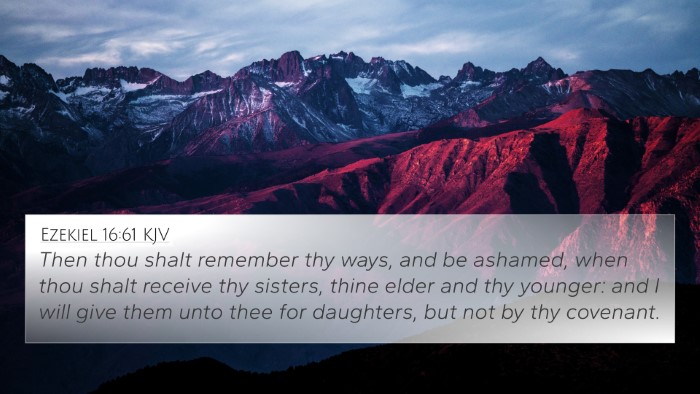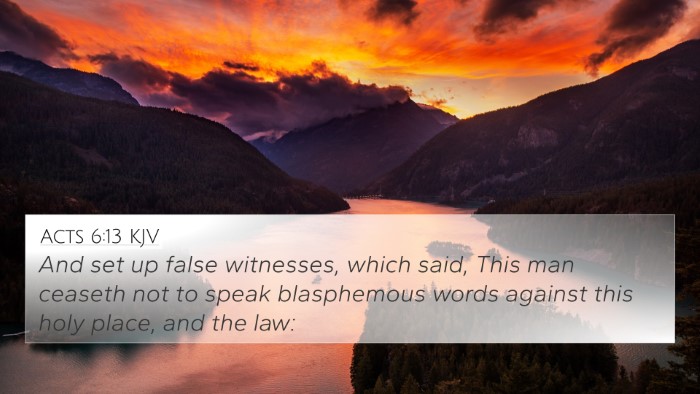Understanding Hebrews 7:12
Hebrews 7:12 states, "For the priesthood being changed, there is made of necessity a change also of the law." This verse emphasizes the significant relationship between the priesthood and the law of Moses, reflecting on the transition from the Levitical priesthood to the priesthood of Jesus Christ, which carries profound implications for believers. Below is a detailed analysis of this verse, incorporating insights from esteemed public domain commentaries.
Summary of the Verse Meaning
This verse signifies a crucial shift in the religious framework established under the Old Testament law. Matthew Henry highlights that the Levitical priesthood was based on a hereditary line, which was limited and imperfect. In contrast, Jesus, being a priest after the order of Melchizedek, introduces a new order that fulfills and transcends the old. This necessitates a shift in the law because the old covenant is fulfilled in Christ (Hebrews 8:13). Adam Clarke elaborates that this change is not merely external but also internal, requiring a transformation in the hearts of believers, suggesting that the new covenant provides a better hope (Hebrews 7:19).
Key Insights
- Nature of the Priesthood: The priesthood has transitioned from a hereditary basis (Levi) to one based on the eternal life of Christ, demonstrating God's plan for redemption.
- Fulfillment of the Law: With the change in priesthood comes a more profound fulfillment of the law, where Jesus becomes the ultimate mediator (1 Timothy 2:5).
- Uniqueness of Christ: Jesus' priesthood is eternal and unchangeable, as outlined in Hebrews 7:24, contrasting sharply with the transitory nature of the Levitical priests.
- Implications for Believers: Believers are no longer bound to the ceremonial aspects of the law but are invited into a direct relationship with God through faith.
- Overall Context: The author of Hebrews seeks to demonstrate that through Christ, the old covenant is rendered obsolete, paving the way for a new covenant grounded in grace and truth.
Cross-References for Hebrews 7:12
Understanding Hebrews 7:12 can be further enriched by exploring related Bible verses. Below are several significant cross-references:
- Hebrews 8:13: "In that he saith, A new covenant, he hath made the first old." This verse underscores the obsolescence of the old covenant.
- Romans 7:6: "But now we are delivered from the law, that being dead wherein we were held." This reveals freedom from the law through Christ.
- 1 Peter 2:9: "But ye are a chosen generation, a royal priesthood..." This reflects the priesthood of all believers under the new covenant.
- Hebrews 4:14: "Seeing then that we have a great high priest, that is passed into the heavens, Jesus the Son of God..." This reiterates Jesus' qualifications as our high priest.
- John 1:17: "For the law was given by Moses, but grace and truth came by Jesus Christ." This highlights the transition from law to grace.
- Galatians 3:24-25: "Wherefore the law was our schoolmaster to bring us unto Christ..." Illustrates the purpose of the law leading to Christ.
- Revelation 1:6: "And hath made us kings and priests unto God." This connects believers' identity to the new priesthood established by Christ.
Comparative Analysis and Implications
Through comparative Bible verse analysis, we grasp the depth of the transition described in Hebrews 7:12. The shift from the Levitical priesthood to the eternal priesthood of Christ represents more than a mere change in religious practices; it signifies a new way of approaching God that emphasizes grace rather than law. The thematic Bible verse connections to topics such as priesthood, the law, and grace are crucial in understanding this progression.
Tools for Bible Cross-Referencing
Utilizing tools for Bible cross-referencing can deepen one's study of scriptures, revealing the interconnectedness of biblical texts. A Bible concordance serves as an invaluable resource in this pursuit, allowing users to find cross-references efficiently. Additionally, engaging in cross-reference Bible study methodologies leads to a richer understanding of the themes and doctrines presented in the Bible.
Inter-Biblical Dialogue
The inter-Biblical dialogue between the Old and New Testaments enriches our comprehension of Hebrews 7:12. By identifying connections between the teachings of the Prophets and Apostolic writings, we can see how God’s revelation through scripture unfolds harmoniously. This also facilitates our understanding of links between Gospels and other New Testament texts, highlighting how they relate to the themes established in the Hebrew scriptures.
Conclusion
In conclusion, Hebrews 7:12 serves as a pivotal verse that encapsulates the transition from the Old Covenant law to the New Covenant established through Christ. Through the lens of various commentaries and cross-referencing, believers can appreciate the depth and richness of this transition. The thematic connections between Bible verses, alongside the identification of related scriptures, create a comprehensive framework for understanding the transformative power of Christ's priesthood.
